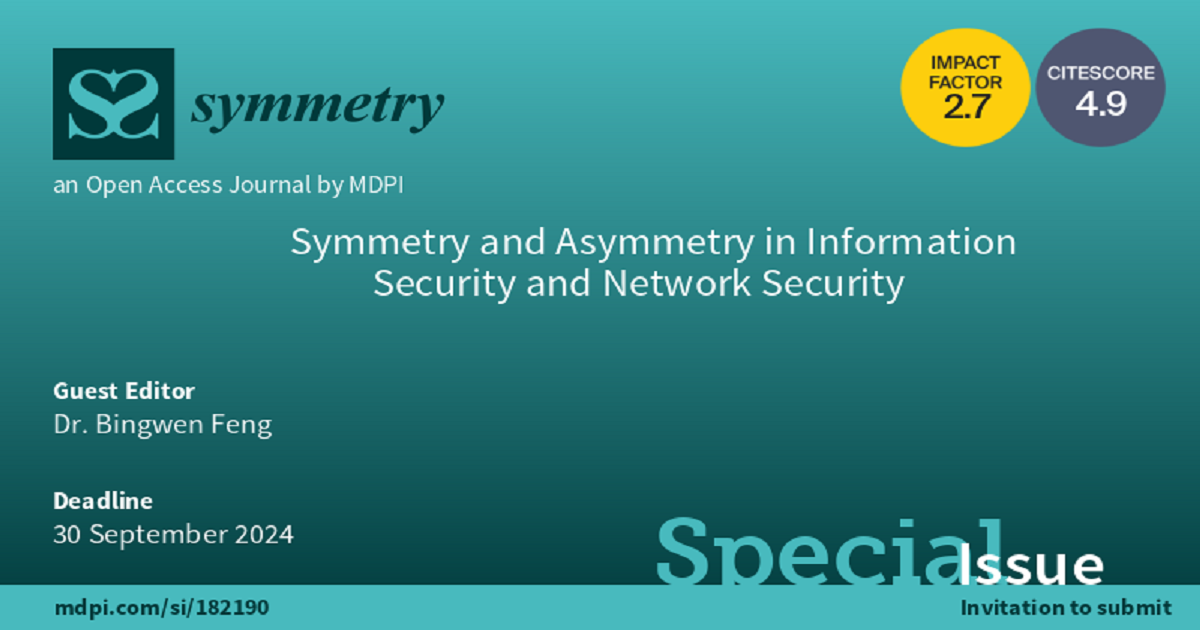Symmetry and Asymmetry in Information Security and Network Security
A special issue of Symmetry (ISSN 2073-8994). This special issue belongs to the section "Computer".
Deadline for manuscript submissions: 30 September 2024 | Viewed by 3285

Special Issue Editor
Special Issue Information
Dear Colleagues,
Symmetry plays an important role in network security and data hiding. Embedded secret information is usually characterized as hidden patterns in information hiding. The analysis of hiding patterns can help understand and evaluate the security of data hiding methods applied to communication networks. The symmetry and asymmetry of hidden patterns can conveniently describe and realize the covert communication channel. The study of detection and correction of hidden patterns is crucial for complex network data hiding approaches. Configurate data hiding techniques to optimize the hidden patterns is promising for the security properties of practical network data hiding such as robustness, undetectability, capacity, etc. Therefore, understanding the symmetry and asymmetry of hidden patterns and their impact on the performance of network covert channels is essential. Overall, the use of symmetry and the understanding of data hiding techniques can help to improve network security.
Please note that all submitted papers must be within the general scope of the Symmetry journal.
Dr. Bingwen Feng
Guest Editor
Manuscript Submission Information
Manuscripts should be submitted online at www.mdpi.com by registering and logging in to this website. Once you are registered, click here to go to the submission form. Manuscripts can be submitted until the deadline. All submissions that pass pre-check are peer-reviewed. Accepted papers will be published continuously in the journal (as soon as accepted) and will be listed together on the special issue website. Research articles, review articles as well as short communications are invited. For planned papers, a title and short abstract (about 100 words) can be sent to the Editorial Office for announcement on this website.
Submitted manuscripts should not have been published previously, nor be under consideration for publication elsewhere (except conference proceedings papers). All manuscripts are thoroughly refereed through a single-blind peer-review process. A guide for authors and other relevant information for submission of manuscripts is available on the Instructions for Authors page. Symmetry is an international peer-reviewed open access monthly journal published by MDPI.
Please visit the Instructions for Authors page before submitting a manuscript. The Article Processing Charge (APC) for publication in this open access journal is 2400 CHF (Swiss Francs). Submitted papers should be well formatted and use good English. Authors may use MDPI's English editing service prior to publication or during author revisions.
Keywords
- network security
- data hiding
- information security





